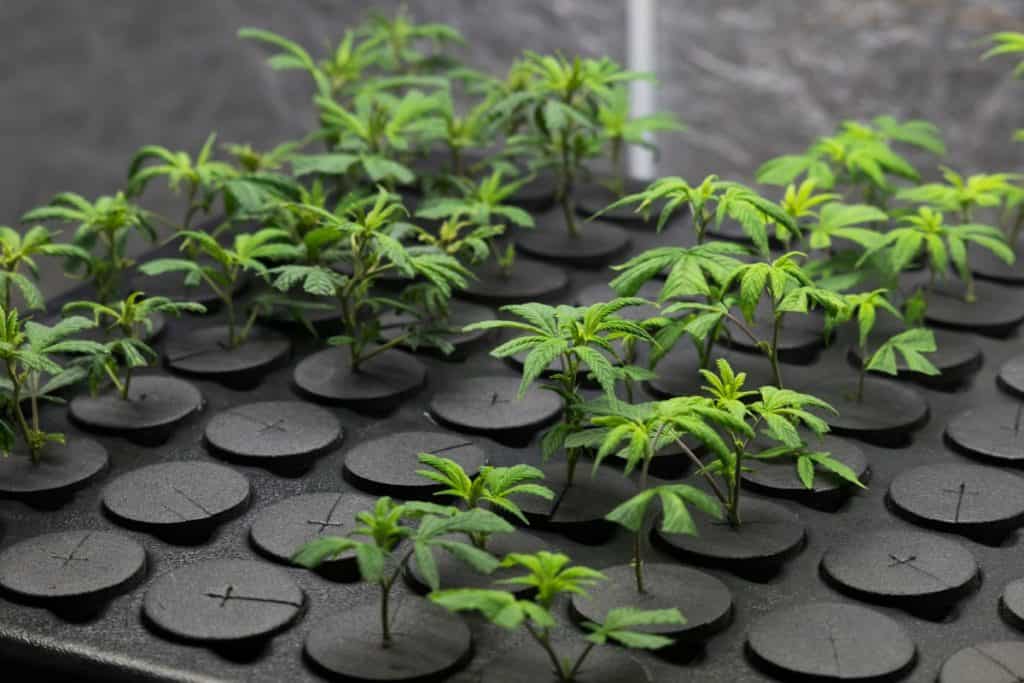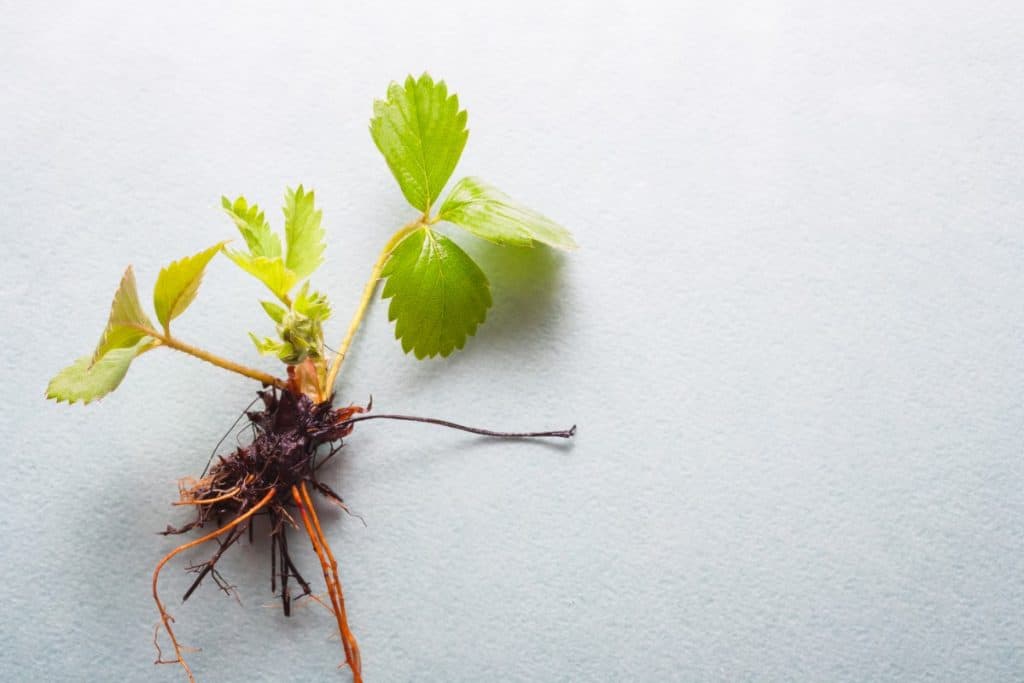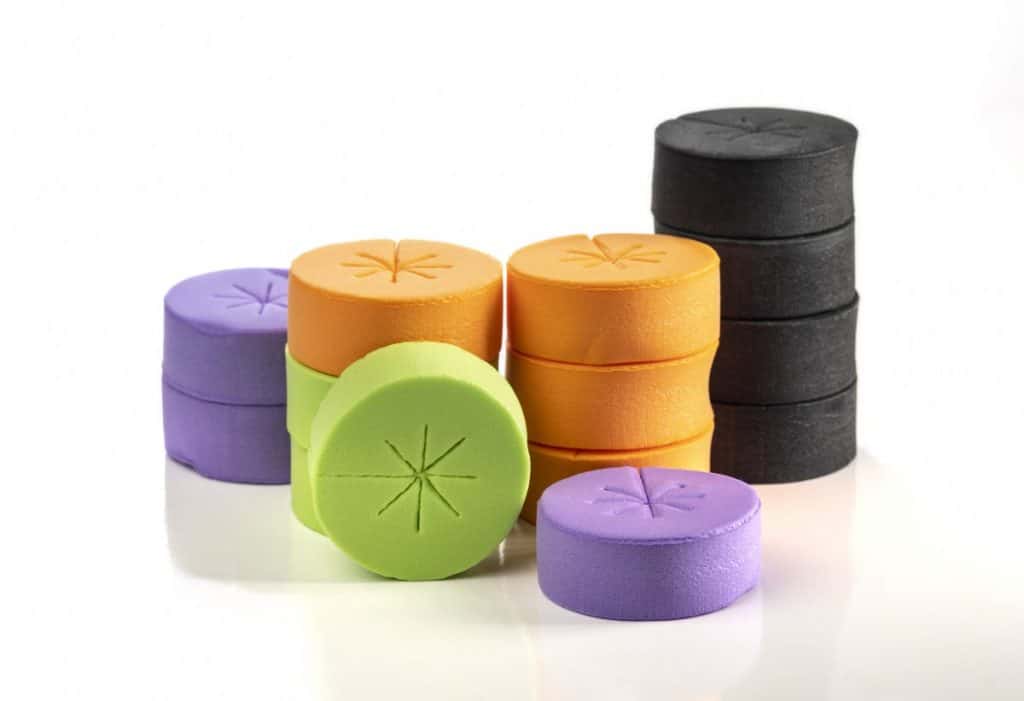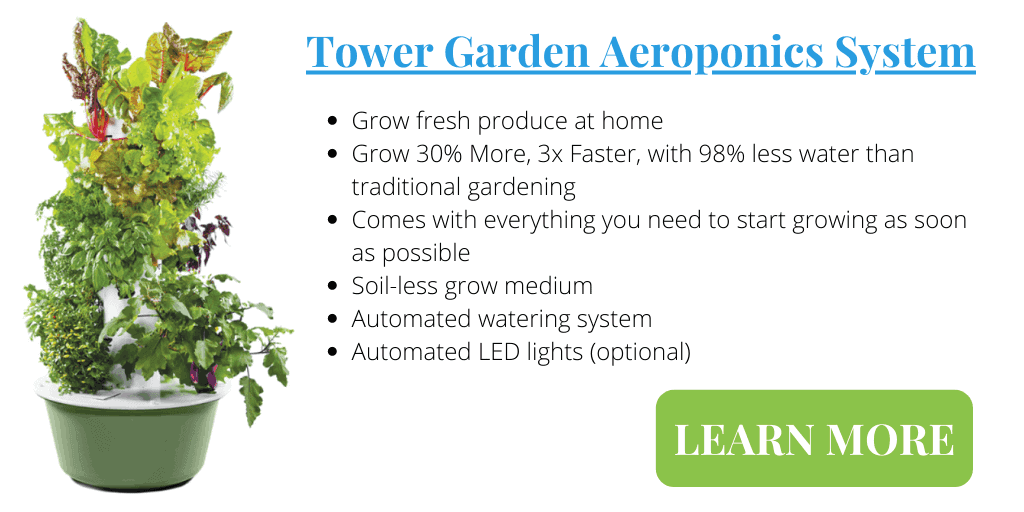Cloning plants has a lot of benefits over the traditional process of seed starting. When adapted to aeroponics the benefits increase even more. If you want faster starts and the ability to select the best strains from the plants you are already growing, Aeroponic cloning is your best option.
Cloning is the process of cutting a small branch of a growing plant and making it sprout its own roots so it can be planted and grow into a full size copy of its mother. An aeroponic cloning machine sprays the bottom of the cutting with a nutrient mist and maintains a humid environment to promote accelerated root growth.
There are a number of benefits that aeroponic cloning can provide. Let’s go through some of the benefits and investigate aeroponic cloning in more detail.

The Benefits of Aeroponic Cloning
Faster Root Development
The combination of fine nutrient mist droplets, high humidity levels and abundance of oxygen to the roots create the perfect environment for growth. In a properly working system you can root a lot of clones very quickly in a small space.
Most Efficient Cloning Method
Aeroponic cloning reduces the need for many of the typical cloning materials. For instance, plants don’t need any rooting media to grow and develop roots. They also don’t need an air stone and pump to oxygenate the water because the misting process does it automatically.
Another good reason is that it saves water. Aeroponic cloners are closed loop systems, any excess water that isn’t absorbed by the plants just falls back into the water reservoir.
Gentile on Roots
Similar to most aeroponic systems, aeroponic cloning machines don’t use a grow medium, that means there is no soil, rock, or other substrate that the roots need to navigate through. This makes life very easy for the roots as they’re able to grow without any resistance.
Nutrient Control
The rooting chamber of an aeroponic cloning system provides direct water and nutrients to the base of the clone and its roots. This prevents the need to grow long and stretched out roots in search of nutrients.
The balance of nutrients the roots receive can be customized to the plant and the environment. The minerals that most affect the root growth early on are:
- Nitrogen
- Potassium
- Phosphorous
- Magnesium
- Sulphur
- Calcium
Cuttings don’t require any nutrients for the first few days that they’re in an aeroponic cloning machine. Later in the process a diluted mineral mixture can be added to encourage strong and healthy growth
Humidity Control
The high humidity level in the rooting chamber is ideal for maintaining moisture on the roots and preventing them from drying out. The plant is able to focus on creating a higher quality root structure with plenty of small hairs that increase nutrient uptake.

Strain Selection
Keeping the best performing strains for each type of plant you grow will ensure you get the hardiest plants with the largest and best quality yields. When you plant a seed there’s no way to know how successful the plant is going to be.
Taking cuttings of your best performing plants and rooting fast and efficiently in an aeroponic cloning machine is the quickest and easiest way to guarantee success.
Safer Transplanting
One of the biggest dangers to clones and starter plants is transplant shock, This is caused by disturbing the root structure. Removing any soil or grow medium from around the delicate roots of a plant can cause damage to the root structure.
Transplant shock can lead to issues including stunted growth, lower yields and more health issues down the road. When cloning in an aeroponic system there is no medium surrounding the roots and therefore transplanting won’t cause damage or shock to the root system.
Best Aeroponic Cloning Machine
The HortiPots 35 pod Aeroponic cloning machine is the perfect solution for any small scale aeroponic grower. This high quality clone propagation kit is UL certificated making it much safer and reliable than other units on the market.
Included in the kit is a high quality water pump with pre-filter to reduce clogging of the misters. The foldable clear dome cover helps reduce transplant stress and maintain a stable humidity level around the plants to encourage fast root growth.
With the HortiPots 35 aeroponic cloning machine you’ll accelerate the rooting process and transition to growing much sooner.
- INDUSTRY MADE CLONING MACHINE: not hand-made DIY thing. All engineering reliable parts, SOLD...
- AEROPONIC PROPAGATOR CLONING SYSTEM: Root your cuttings in 4-10 days and consistent 100%...
- FREE PROPAGATION DOME INCLUDED: Our plant cloning system comes with all parts needed including...
Preparing Your Cuttings
Aeroponic cloning uses cuttings from a mother plant in order to replicate it. To give your clones the best advantage, make a clean 45o cut with a sharp knife. This will provide lots of surface area on the bottom for root growth and avoid crushing the base like scissors often do.
Your cuttings should be anywhere between 3 and 5 inches (7 – 13 cm) with at least 2 inches (5 cm) of only stem dangling below. There should be no leaves in the misting chamber.

Foam Support Collars
Cuttings are secured in the center of foam discs called support collars. The foam collars hold the stem firmly without squeezing it too tightly. The root mass is able to develop and grow below the foam collar suspended in the rooting chamber.
Foam collars are sterile to prevent the growth of fungi or harmful bacteria. They also perform 2 other functions during the rooting and growing phases.
The discs keep any UV light out of the root chamber, this prevents algae and bacteria growth inside the chamber that would harm the roots and clog the misters.
The second purpose is to act as a seal to prevent the mist from spraying out of the chamber and creating a mess during the watering cycle.
Room Conditions For Cloning
The temperature of your cloning area should be around 70℉ (21℃). Humidity levels should be at 60%, or slightly higher. Extremely warm temperatures and high humidity levels add transpirational stress to your cuttings. And that’s the last thing you want to do to your plants, especially during the early stages.
You should also keep an eye on the temperature inside the machine by using an aquarium thermometer. The water pump can raise the temperature of the water solution over time which will slow root growth.
- 👸 - Easy to read : With compact design ,The Large LCD display unit is easy to read.
- 👋 - °F / ℃ : It records a wide range of temperature (can be read in Celsius or...
- ⏰ - Precise : Displaying temperature measurements within 0.1 degrees! And has a temperature...
Watering System
The base of an aeroponic cloning machine is a reservoir typically made by HDPE food grade plastic. This reservoir holds the nutrient solution, water pump, piping and misters. The top of the reservoir has the circular holes sized to fit the foam collars that support the plants.
The pump is located in the bottom of the reservoir covered in the nutrient solution which it cycles through the system. When on, the pump sends the water through the piping and the misters atomize it into a fine mist.
The droplet size of the mist should be between 30-100 microns to make nutrient uptake as efficient as possible for the roots.
Cycle Timer
The water pump is controlled by a cycle timer which repeats the ON/OFF sequence continually 24/7. A common cycle will run 15 sec ON and 3 minutes OFF.
The main goal of the cycle is to lightly cover the base of the stalk and roots with the fine mist of nutrients without allowing the water droplets to recombine and drip off. After the longer OFF cycle, the misting repeats to prevent the stalk and roots from drying out.
This constant misting keeps a high humidity level in the rooting chamber which promotes root growth.
Nutrient Solutions
Fresh cuttings don’t require any nutrients because they can’t absorb them without having roots. The best solution to use initially is a distilled water and vitamin B mixture, the vitamin B helps reduce the shock shock of being cut from the plant.
Once some roots begin to get established, you can switch to a highly diluted base solution to feed the plants while the roots continue to develop.
For the best results, you should have a pH balance of 6.0 – 6.3. Investing in a pH kit is a smart way to maintain a well-balanced, healthy watering system for your plants.
- ✔ACCURATE AND RELIABLE: To achieve high accuracy, the TDS water tester is equipped with a...
- ✔MULTIFUNCTIONAL AND UPGRADED: Professional TDS (Total Dissolved Solids), EC (Electrical...
- ✔EASY AND INSTANTLY: Just turn TDS meter on and stir water gently, then stabilized readings...
Another factor to consider is the measures of electrical conductivity (EC). The EC measures the number of concentrated minerals in the water. The EC should be in the range of 0.4 to 0.6. You can use an electrical conductivity meter for precise readings.
How Much Light Do Clones Need?
The best type of lighting for cloning is indirect lighting, your light source shouldn’t be direct sunlight or high powered grow lights.
When you’re using artificial lighting, a small seed starting fluorescent works well. 2-foot low wattage T5 LED Grow Lights are also a very efficient and low cost lighting option for cloning.
- 【Excellent Light for Seedlings】Equipped with a professional rate of Luminous flux...
- 【Adjustable Rope Hanger】Featuring with an adjustable regulator, the hanger wire is...
- 【Ultra Bright & Removable Reflector】With high-quality aluminum reflector,light efficiency...
It’s important to avoid excess heat from your lighting source as this can dry out or burn your clones. Lights should be placed 5 – 8 inches away from the cuttings to avoid damage.
After the first few days of indirect lighting, switch to a 12-18 hour on cycle to spur plant growth. Plants focus most on root growth during the dark portion of the lighting cycle so experiment with your plants to get the best results.
What To Expect When Cloning
Don’t worry if your cuttings seem to wilt in the first hour. They just need a bit of time to adjust to their new life-support system.
It’s important to keep an eye on them during the first 24 hours. Some cuttings may not make it. If that’s the case, simply remove it and replace it with a new one.
Make sure there are no fans pointing in their direction. Too much air movement can dry them out.
Developing Roots
After a couple of days, you’ll be able to see some roots start developing. They’ll appear bright white at first, then as they grow further, they’ll turn a light shade of yellow.
If at any time you notice the roots turning brown, that’s a sign that your nutrient solution is too warm. If you’ve added nutrients, now would be a good time to change it out. If you haven’t yet, this is the perfect time to add nutrients to the water reservoir.
Secondary roots should start growing during the second week of aeroponic cloning. If you’re thinking about moving them, now would be the best time. As long as the roots have reached 6 – 8 inches (15 – 20 cm) in length, they should be fine on their own.
Growing With Aeroponics
Converting your newly rooted clones into full sized producing plants is easy using an aeroponic grow system like the Tower Garden. This vertical aeroponic tower has a small footprint but can grow more than 20 different plants at the same time.
Whether you want to grow indoors or outside, the Tower Garden vertical aeroponic garden can provide plenty of fresh, healthy and delicious food for your family. For more information check out What is a Tower Garden and How Does it Work.

Care and Maintenance
The key to successful aeroponic cloning is to remember these 3 important factors.
- You must always keep your machine clean.
- Change out nutrients once a week.
- Regularly check the water’s pH levels.
Before you start using an aeroponic cloning machine for the first time make sure it is thoroughly cleaned out with warm soapy water. Give it a thorough rinse to remove any soapy residue that may be left behind.
To sanitize your machine you can run a diluted bleach and water solution through the entire system. Top up the reservoir with water and a ¼ cup of bleach then run the system for 12 to 24 hours.
Rinse out the bleach solution and operate it again with straight water for 6 hours to flush any remaining bleach from the system. Once flushed you can fill up the reservoir with distilled water and start adding your clones.
Conclusion
Aeroponics is an impressive plant propagating method. It requires little water and lighting, a lot of maintenance and care, and a few nutrients.
Compared with other systems, aeroponic cloning yields plants that grow stronger and taller. Yet it does have some drawbacks.
But the good does outweigh the bad. All you have to do is to pay attention to the details, and you’ll be growing your own aeroponics garden in no time.





